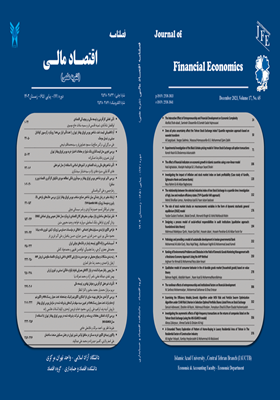The role of stock market shocks on macroeconomic variables in the form of dynamic stochastic general equilibrium (DSGE) model
Subject Areas : Financial EconomicsYazdan Gudarzi Farahani 1 , Babak Esmaili 2 , Morvarid Khajeh 3 , Vahid Mahboubi Matin 4
1 - Department of Accounting Economics, Faculty of Economic and Administrative Sciences, University of Qom, Iran (corresponding author).
2 - Department of Accounting Economics, Central Tehran Branch, Islamic Azad University, Iran
3 - . Department of Financial Management, Kish Campus of Tehran University, Iran..m.khajeh@ut.ac.ir
4 - Department of Management, North Tehran Branch, Islamic Azad University, Tehran
Keywords: investment, stocks, consumer spending, Keywords: Capital market, dynamic stochastic general equilibrium (DSGE) model. JEL Classification: E49, E41, E52, C61,
Abstract :
Abstract The purpose of this paper was to investigate the impact of stock market shock on macroeconomic variables with the approach of Dynamic Stochastic General Equilibrium (DSGE) models. For this purpose, the data of the time period 1990-2021 with seasonal frequency has been used. Modern financial systems usually include financing from the financial assets market in addition to financing the banking sector. The interaction between the stock market and aggregate activity has received much attention in the past decade. In this regard, traditionally, the stock price usually affects the stock market as the discounted current value of the expected stock profits. In this framework, stock prices are influenced by both production (through profits and dividends) and interest rates (through the rate at which future dividends are discounted). In this study, the capital market shock has an effect on the economy through the channel of consumption expenditures of households and investment expenditures of companies. The direct effects of stock price fluctuations on total spending have made the stock capital market known as a leading indicator in the economy. The obtained results indicated that the reaction of macroeconomic variables to the demand shock was more intense than the shock from the supply side, and only the variables of tax revenues and bank facilities showed a negative reaction to the demand shock in the conditions of the supply shock. Also, the amount of employment has shown a positive reaction in response to the shock on the supply and demand side in the capital market


